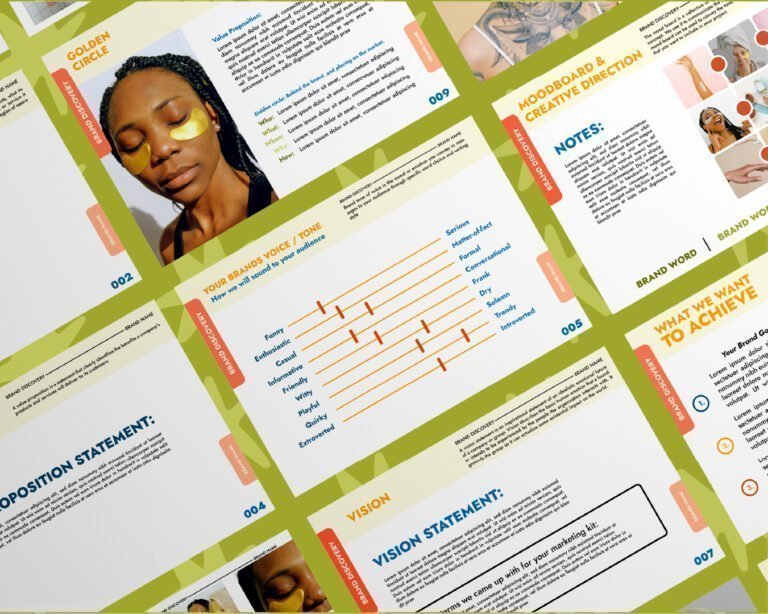Welcome to the world of blogging, where you can share your knowledge, experiences, and thoughts with the world. A blog post is a piece of writing that is published on a blog. It can be about anything from personal experiences, news, opinions or tips on a specific topic.
The importance of writing a good blog post cannot be overstated. A good blog post can help you establish yourself as an authority in your niche and attract more visitors to your website.
It provides value to your readers and allows you to engage with them. A poorly written blog post may damage your reputation and discourage readers from coming back.
Overview of the steps to follow when writing a blog post
The process of creating a quality blog post involves several steps that need to be followed carefully:
- Choose your topic
- Create an outline
- Write the first draft
- Edit and revise
- Add images or videos (Optional)
- Conclusion
In this article, we will go through each step in detail so that by the end of it, you will have all the tools necessary to create stunning blog posts that will attract readers. To write an exceptional blog post, there are some things you should keep in mind.
For example, knowing who your audience is essential because it influences how you write and structure your piece. Additionally, having good research skills can help make sure that whatever information you present is accurate and informative.
If done right, writing a great blog post can not only provide value for readers but also increase traffic for your website while establishing yourself as an expert within your niche. Let’s dive into each step so we can start creating an exceptional blog post.
Choosing Your Topic
Before writing a blog post, it’s essential to choose the right topic that will appeal to your target audience. The topic should be relevant and interesting to them so that they engage with your content. To select a suitable subject, you need to understand who your target audience is and what their needs are.
Defining Your Target Audience
Knowing your target audience is crucial for any blog post’s success. Researching their demographics such as age, gender, education level and interests will provide insight into what type of topics will interest them.
Consider the tone of voice you use in the article based on your target audience’s preferences. For example, if you’re targeting young adults, then using a casual tone might be more effective than using formal language.
Brainstorming Ideas for Your Blog Post
Once you have understood your target audience’s needs and demographic information, it’s time to brainstorm ideas for the blog post. Think about different angles that would help address their pain points or offer solutions to their problems.
You can also get inspiration from current events or trends related to your niche. Maintain an ongoing list of potential topics so that when it’s time to write a post you’ll have several options available that are well-suited for engaging with your readership.
Gathering Information on The Chosen Topic
Now that you have selected a topic, it’s time to gather information about it. Conduct thorough research and collect data from reliable sources such as industry reports or academic journals if applicable. The research process should include finding examples of successful blog posts related to the chosen topic and analyzing how they approach the subject matter: What makes these posts engaging?
How do they present complex ideas simply? Ensure that your sources are credible, and that you only use current and relevant data.
This will help to create an informative and useful post for your target audience. By taking time to choose the right topic, understanding your target audience’s needs, brainstorming effective ideas, and gathering reliable information on the chosen topic, you will be well-positioned to write a compelling blog post that resonates with readers.
Create an Outline
Creating an outline is the first step to writing a good blog post. It helps you organize your thoughts and ideas, determine the main points you want to cover in each section, and decide on the tone and style of your blog post.
An outline gives structure to your writing and helps you stay on track, ensuring that you cover all the necessary information in a logical order. When creating an outline, start by brainstorming ideas for your blog post.
Jot down anything that comes to mind related to your topic. Once you have a list of ideas, organize them into sections based on their relevance and importance.
Determine which ideas should be grouped together under one heading or subheading. After grouping your ideas into sections, determine the main points you want to cover within each section.
These main points will serve as the backbone of your blog post and will guide the reader through your content. Be sure to use strong topic sentences for each main point so that readers know exactly what they can expect from each section.
Organize Your Thoughts and Ideas into Sections
One of the most important aspects of creating an effective outline is organizing your thoughts and ideas into sections. Each section should have a clear purpose or focus that relates back to the overall topic of your blog post. These sections will act as mini-articles within your larger piece, giving readers a clear roadmap for navigating through complex topics.
When deciding how many sections to include in your outline, consider how much information you have gathered on a given topic and how much detail is necessary for readers to understand it fully. Try breaking down large topics into smaller subtopics if possible so that readers can easily digest complex information without feeling overwhelmed.
Determine Main Points You Want To Cover In Each Section
Once you’ve organized your thoughts and ideas into sections, it’s time to determine the main points that you want to cover within each section. These main points should be clear and concise, using strong topic sentences to guide readers through your content. They should also be relevant and interesting, keeping readers engaged throughout the entire blog post.
Before writing each section, take some time to think about what information is most important for your readers to know and how you can best convey that information. Use examples, anecdotes, or statistics to support your main points and make them more memorable for your readers.
Decide On The Tone And Style Of Your Blog Post
It’s important to decide on the tone and style of your blog post before beginning to write. Consider who your target audience is and what they might expect from a blog post on this topic.
Is a formal or informal tone appropriate? Should you use humor or be more serious in your approach?
Choosing the right tone and style will help create a connection with your readers and keep them engaged throughout the entire post. It will also help establish you as an authority on the topic if done correctly.
Take some time to consider different options before making a decision, as it can greatly impact the way in which people perceive both you and your content. Creating an outline is an essential part of writing a good blog post.
It helps organize thoughts into sections while determining the main points that must be covered in each section of the article. In addition, choosing an appropriate tone/style helps establish a connection between yourself and targeted audiences while ensuring that they remain interested in reading through all of its content without getting bored or overwhelmed by too much detail at once!
Write the First Draft
Start with an Attention-Grabbing Introduction
The introduction of your blog post is crucial, as it sets the tone and captures the reader’s attention. It should be engaging and informative, giving readers a reason to continue reading. One way to achieve this is by starting with a thought-provoking question or statement that relates to your topic.
Alternatively, you can use a shocking statistic or anecdote to grab attention. After you’ve successfully grabbed your audience’s attention with your opening hook, you should provide some context for the topic you’re writing about.
This could be anything from introducing new vocabulary related to your subject matter or providing some background history on the subject itself. Make sure that your introduction sets a clear foundation for what will follow in the rest of the blog post. Use Subheadings to Break Up Content and Make it More Readable
Once you’ve nailed the introduction of your blog post, it’s time to begin organizing the content that will follow. Using subheadings throughout your article can help break up large chunks of text, making it easier for readers to consume information in smaller pieces. In addition to helping with readability, subheadings also serve as signposts for readers who are scanning through content looking for specific information.
When creating subheadings, make sure they are descriptive and reflect what each section will cover. Don’t be afraid to experiment with different styles such as questions or sentences rather than traditional headings – whatever works best for conveying information in an impactful way. Incorporate Relevant Examples, Statistics, or Anecdotes to Support Your Points
To make your writing more engaging and persuasive, consider including relevant examples or statistics that support key points in your blog post. These could come from current events or research studies related to your topic area.
Anecdotes can also be powerful tools for capturing readers’ attention and making your content more relatable. Personal stories or case studies can help illustrate points you’re trying to make in a way that resonates with readers.
Be cautious not to overuse examples or anecdotes, as too many can bog down the flow of your writing. Use them strategically only when necessary to support a point or argument you’re trying to make in your blog post.
Edit and Revise
Check for Grammar, Spelling, Punctuation Errors
Once you have finished writing your blog post, it is essential to go back and check for any grammar, spelling or punctuation errors. These mistakes can make your writing look unprofessional and can even confuse your readers.
You can use tools like Grammarly or Hemingway to help you identify and correct these errors. However, do not rely solely on these tools as they may not catch every mistake.
It is also important to read through your blog post carefully to ensure that the language flows well and that the sentences are structured correctly. Do not hesitate to read out loud if it helps you catch any errors or awkward phrases.
Remove Unnecessary Words or Sentences
Another crucial step in editing and revising your blog post is removing any unnecessary words or sentences that do not add value to the content. This includes generic phrases like “in conclusion” or repetitive statements that could be merged into one sentence.
Eliminating redundant sentences will keep your audience engaged while reading the article by getting rid of any unnecessary filler content. Always ask yourself if a sentence contributes anything new before including it in your final draft.
Ensure That All Information Is Accurate
The last step of editing and revising a blog post is ensuring that all information provided in the article is accurate. Research is critical when writing a blog post, but sometimes sources may be unreliable or outdated.
To ensure accuracy, double-check statistics with multiple sources before including them in your article. It’s better to spend extra time verifying information than publishing false data which could damage credibility with readers over time.
Editing and revising a blog post involves several steps such as checking for grammar errors, removing unnecessary words/sentences, and ensuring accurate information throughout the text. By following these steps rigorously, the final product is a polished article that expresses your ideas in a clear and concise way.
Add Images or Videos (Optional)
Visual content is a powerful tool for attracting and retaining the attention of your readers. Including relevant images or videos in your blog posts can make them more engaging and help to break up long chunks of text.
Include Relevant Images or Videos that Support Your Content
The first step in adding visual content to your blog post is to choose images or videos that are relevant to your topic. Consider using original images or videos that you have created yourself, as this can help to make your blog post feel more unique and personal.
Alternatively, you can use stock images or videos from reputable sources such as Shutterstock or Getty Images. When selecting visual content, make sure it supports the message of your blog post.
Avoid using generic or unrelated images that could confuse readers and detract from the overall impact of your post. Instead, choose visuals that add value by illustrating key points, providing context for data, demonstrating a process, or simply entertaining the reader.
Optimize Images for Fast Loading Speed
While visual content can enhance the reader’s experience on your blog post, it’s important not to sacrifice loading speed for aesthetics. Large and unoptimized images can slow down page load times, which may cause readers to lose interest and move on to another website.
To optimize images for fast loading speed:
- Reduce image file sizes by compressing them without compromising quality
- Select appropriate file types (e.g., JPEGs for photos, PNGs for graphics with transparent backgrounds)
- Use descriptive filenames and alt tags to improve accessibility and SEO
- Avoid using too many images – only use what is necessary to support the message of your post
By optimizing your images for fast loading speed, you can ensure that your blog post remains accessible and engaging to readers on all devices, including mobile devices with slower internet connections.
Conclusion
Writing a blog post may seem like a daunting task, but by following the steps outlined in this article, you can create high-quality content that engages your readers and drives traffic to your website. It’s important to choose a topic that resonates with your target audience, organize your thoughts into an outline, and write with clarity and passion.
Remember to always edit and revise your blog post before publishing. Check for grammar, spelling, and punctuation errors, and make sure all information is accurate.
Including relevant images or videos can also enhance the readability of your blog post. Writing a blog post can be a rewarding experience that helps establish you as an expert in your field.
By consistently producing valuable content that resonates with your audience, you can build a loyal following and generate leads for your business. So don’t be afraid to get started – put these tips into practice today!









